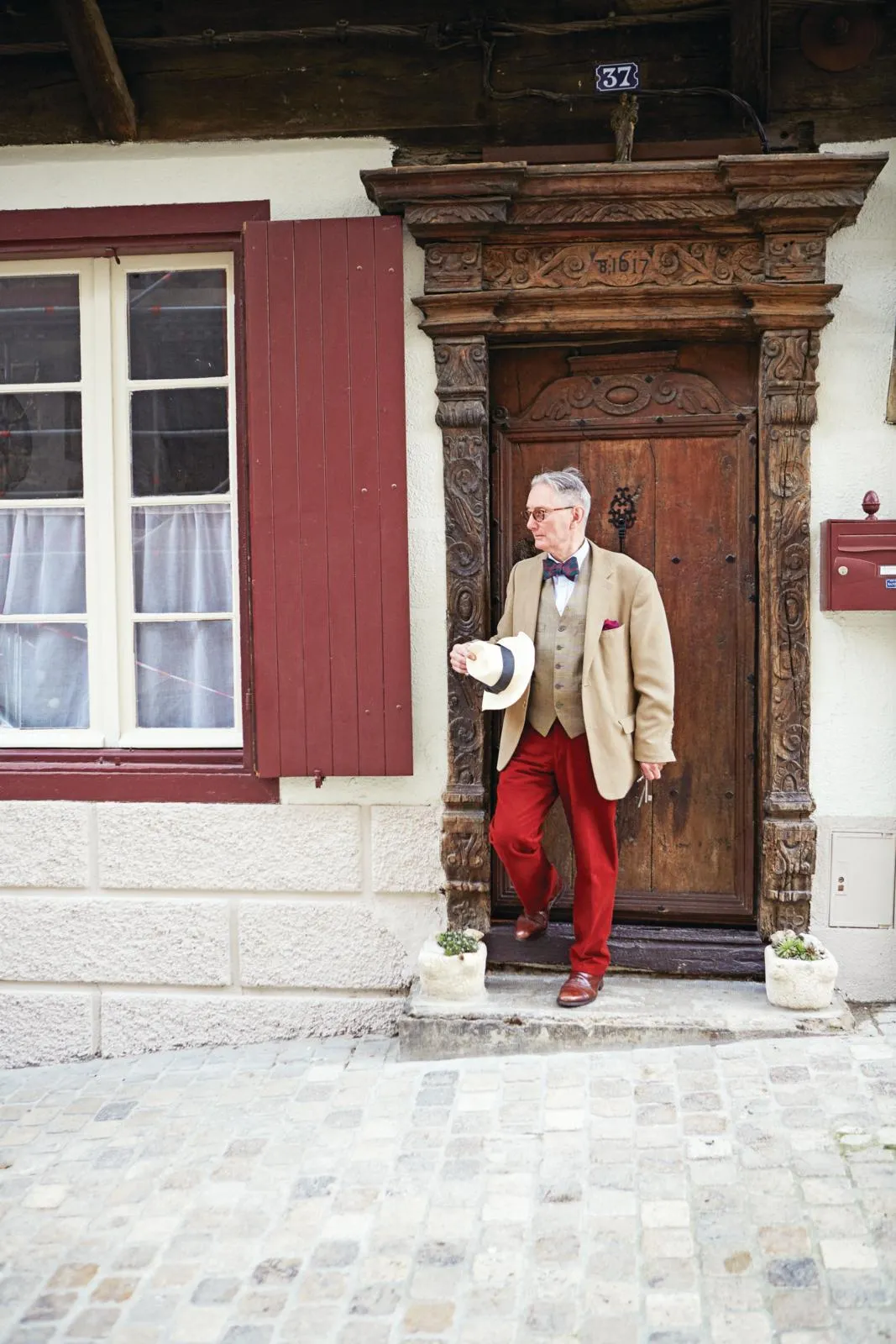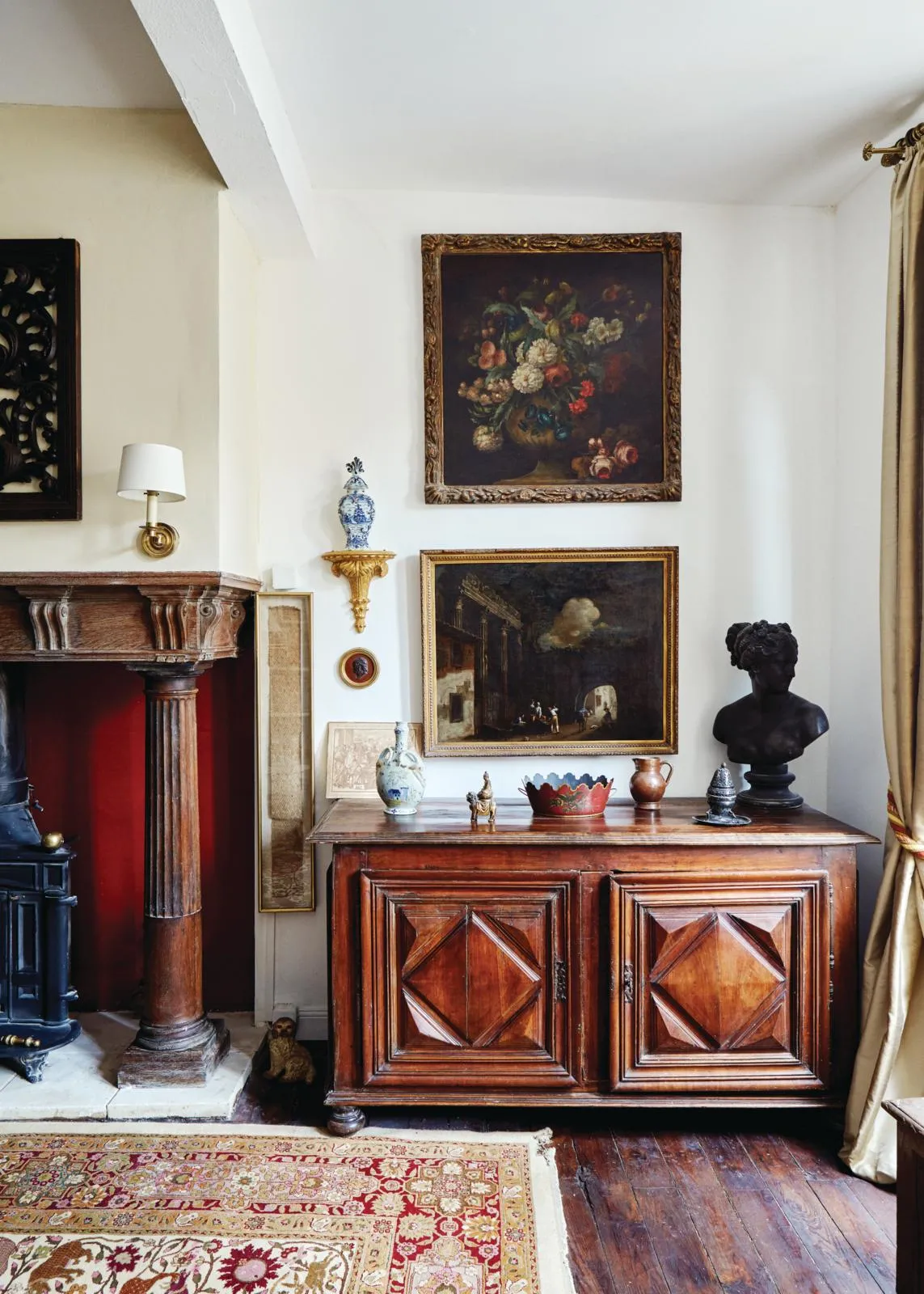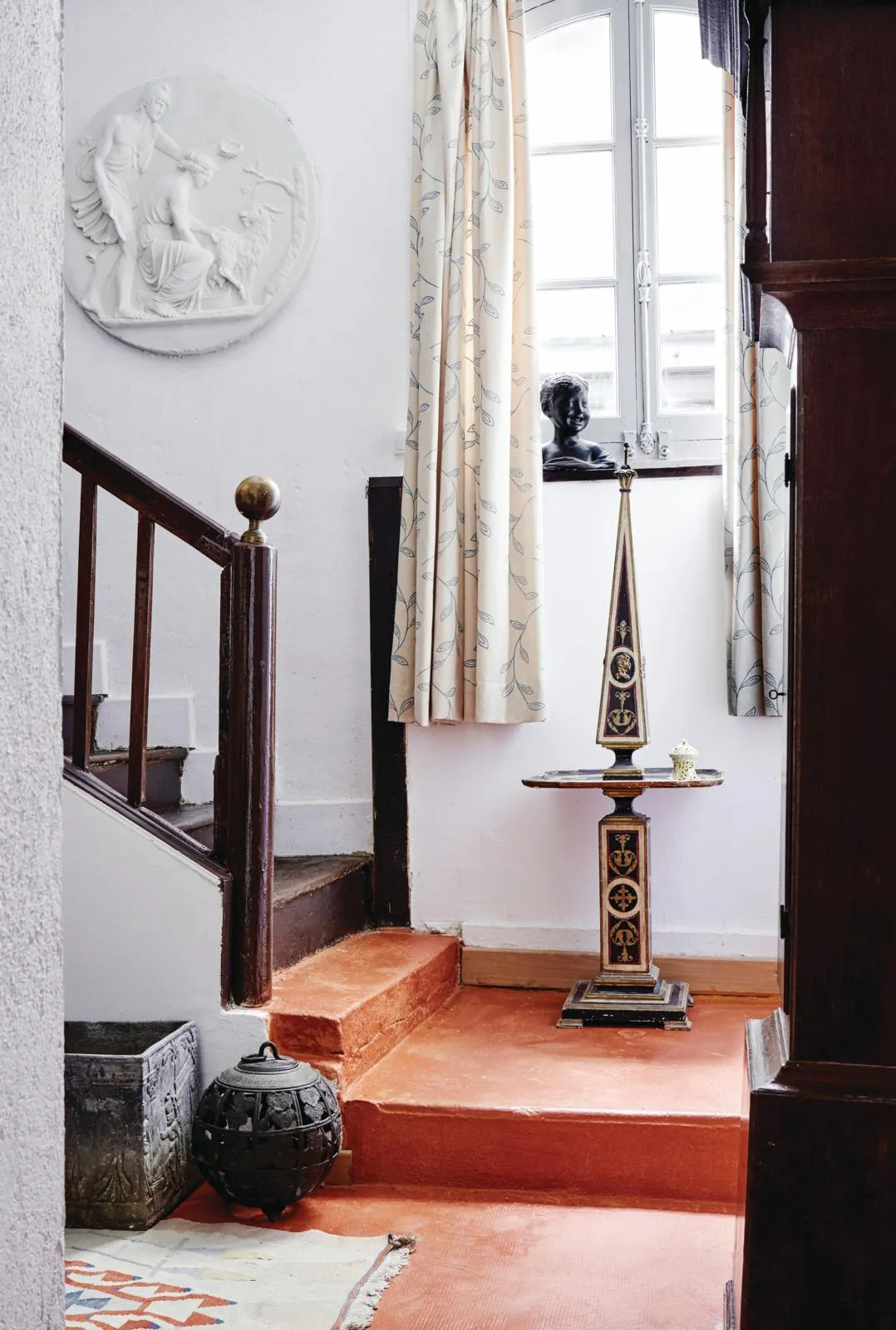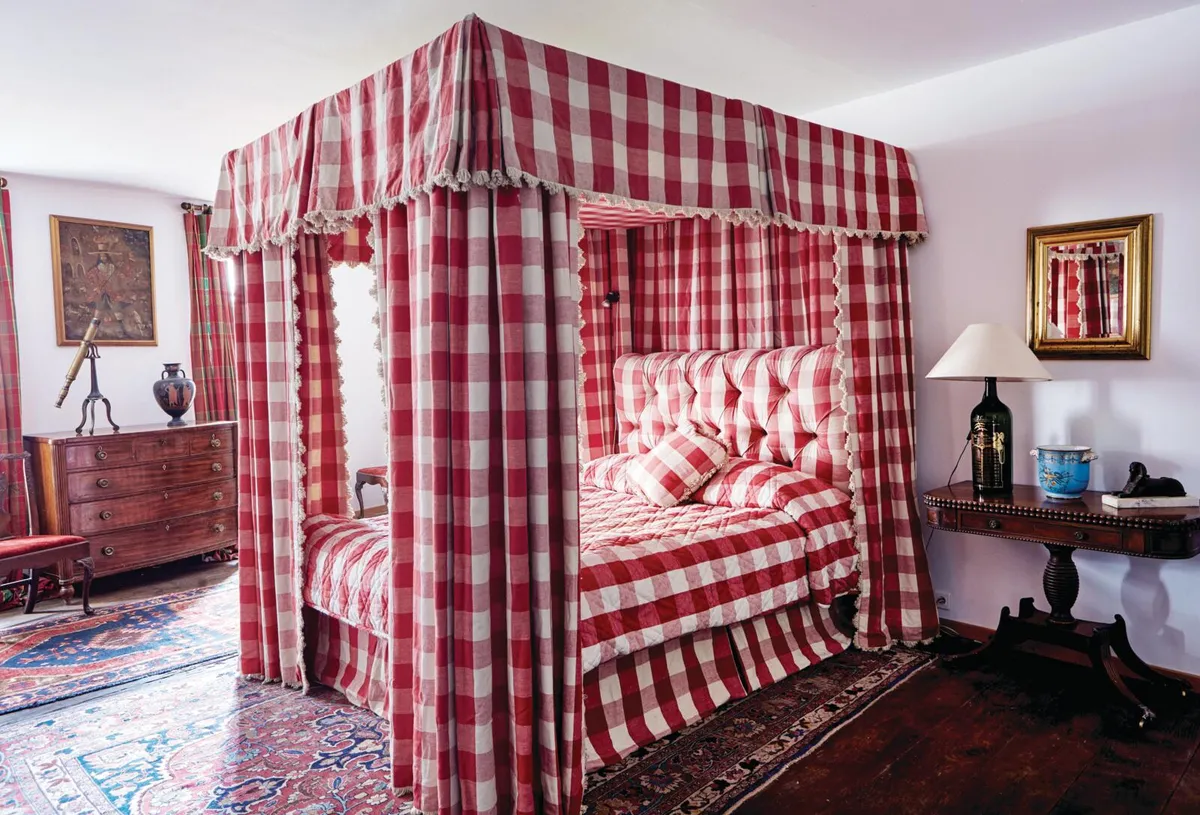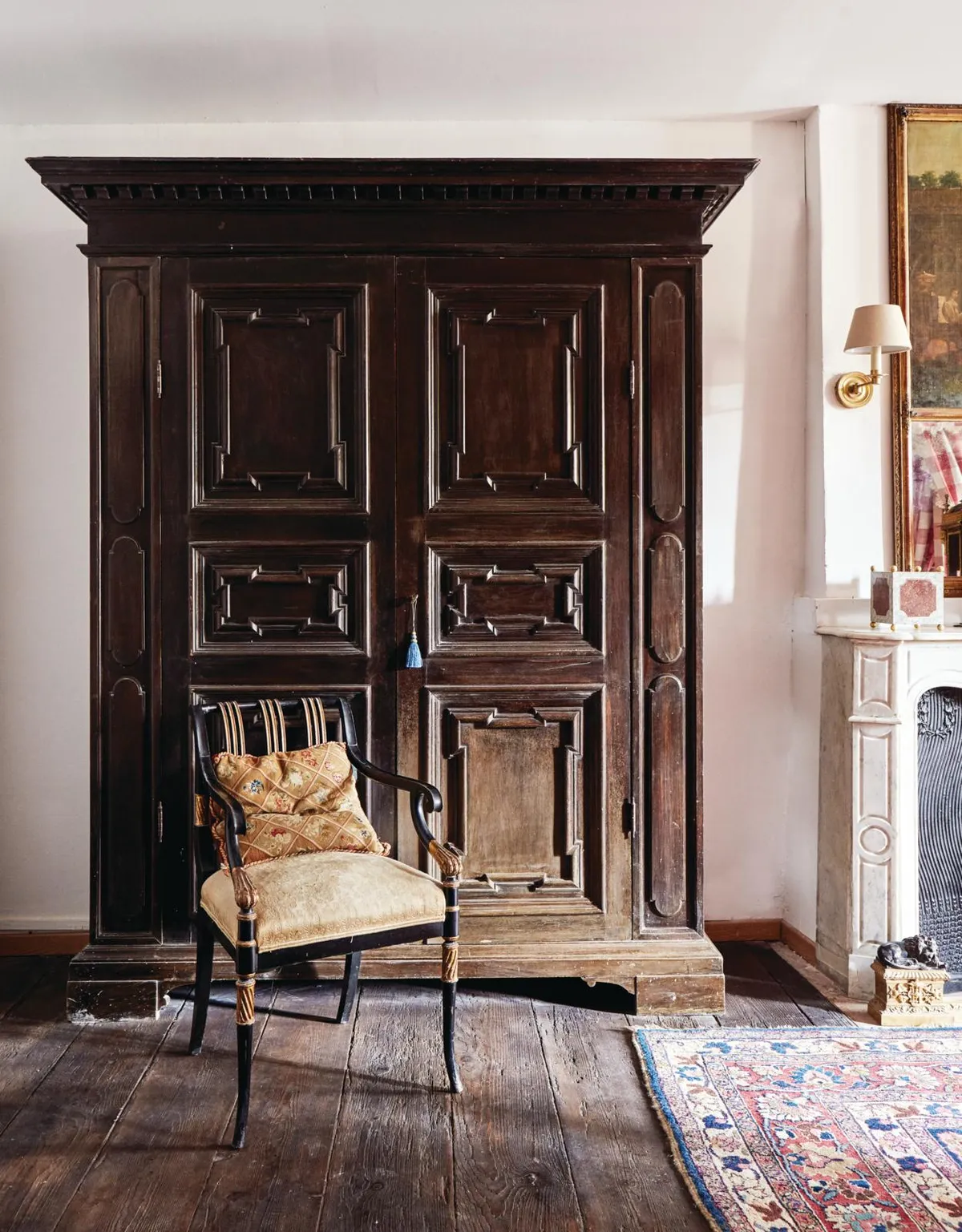Period furniture and antique architectural features have always been two of Roger de Muir’s passions. His current home, previously an unloved 17th-century townhouse in Foix, overlooking the gothic church of Saint Volusien, is a treasure trove of authentic pieces collected over the years. The rooms are decorated with 19th-century blue-and-white china, Renaissance and English paintings and the odd piece brought back from a sale or auction, purely for its intriguing appearance.
His addiction to collecting started at an early age. ‘I remember, when I was nine or 10, developing a real love for Chinese and Japanese bronzes,’ he says. ‘In the early 1960s, I would visit junk shops and find things for next to nothing.’ At around the age of 15 the architectural bug took hold and he would often go off exploring soon-to-be-demolished townhouses all over London. Since then, he’s been fine-tuning his keen eye for seeking out exquisite furniture and antique architectural salvage.
Roger left London after many years spent working as an advisor to one of London’s leading architectural antiques dealers. In 2008, after the lease on his flat came to an end and work folded, he began renovating period properties in France. ‘My previous renovation was a large country house in which I almost froze to death in winter,’ he says. ‘I sold it partly furnished and incorporated what was left into my house in Foix.’
His current home was found in a slightly unorthodox fashion – by contacting the archbishop’s office in nearby Pamiers to see if they had any properties for sale. A church house opposite the Saint Volusien in Foix came up on their records straightaway.
You might also like a medieval Welsh hall house
The house had been a charity store for the Rouge Croix before Roger bought it, and was divided into a warren of tiny storerooms filled with floor-to-ceiling shelves. Despite this, Roger could see it had been a beautiful place at one time – it was built by the church in 1617 after the religious wars and had been used for the visiting bishop of Pamiers and other important dignitaries of the time.
‘As with all my new projects, I sat down with a good glass of wine, drew up my plans and lists and started from the top of the house working down to the bottom,’ Roger says. ‘Much of the work I did myself with the help of local French artisans, who gave me a hand painting and plastering the walls and also helped with some repairs to the 17th-century staircase that winds right to the top of the house.’
Four months after moving in, still with just one cold tap in the house, Roger met his future husband, Roland Mabille. Having been a film set designer for many years, Roland was able to help Roger with the renovations, adding his own decorative finishes to the house – one being red and white doors that lead into the master bedroom, and the terracotta floor in the kitchen/diner and hallway. The warm colours have enhanced the richness of the furniture and added even more character and charm to the interior.
Roger’s personal taste and passion for all things Renaissance have flourished since he’s lived in this distinctive historical property and, now that he has amalgamated his era-spanning collections of furniture and accessories with the building’s architectural features, they can be shown off in all their glory. This includes the 17th-century carved oak front door, listed as being the most important in the town and still in incredible condition.
You might also like a medieval country house renovation
‘I’ve really enjoyed trawling the local auction houses and attic sales in search of items to tie in with what I’ve already inherited,’ Roger says. ‘I like to hold on to collections that have sentimental value because of the memories and places I’ve lived in and then add to them.’
This is borne out in the clusters of Renaissance-style paintings that adorn the walls, some of which depict saints, such as the Italian oil-on-canvas of Saint Cecilia above the ebony inlay cabinet in the corner of the salon. These are juxtaposed with more modern pieces, such as The Pulpit by Sophie Knight c1990, which hangs above a writing desk.
A hoard of blue-and-white 19th-century china, inherited from Roger’s parents, is displayed on a plate rack in the dining room. The theme of this collection extends into other rooms in smaller arrangements, highlighting the rich wood tones throughout the house. Large items of furniture that Roger has collected are often introduced as statement pieces in each space. ‘I’ve tried to place something special in every room if I can,’ he says.
While Roger is a true collector and owns a great number of treasured pieces, most of the antiques are sold off whenever he decides it’s time to move house. And so, when a new project begins, so too does the collecting process. ‘There’s only one object that I could never part with,’ Roger admits, ‘and that is a 17th-century oriental burner that my late father, after much persuasion, gave to me for my 12th birthday.’

